I had the recent pleasure of talking virtually to talented textile and fibre artist Abigail Wheeler. When I first saw her work I was intrigued by her striking use of colours and abstract designs. I was interested in finding out more about Abigail Wheeler, her work and her creative process. So here goes…
Hi Abigail Wheeler! Would you mind telling us a little about yourself and your background please?
My name is Abigail Wheeler, I am originally from the USA but have spent the last six years in Berlin, Germany studying Textile Design and completing my Masters in Product Design. Over the last two and a half years my husband and I founded a design studio together, Opt Studios. We focus on bringing abstraction into a 3D context and blurring the lines between fine art and design with the one-off objects and carpets we make. The below images show carpets from ‘The Subjective Objects’ Series and two pieces of the ‘Contained Abstractions’ Series by Opt Studios.
How did you get into working with textiles?
Some of my earliest textile memories are with my mother, who was a quilter, and got me started sewing, knitting and braiding at a really early age. I spent a lot of time hand knitting as a teen and into my twenties and then experimented with various textile techniques while traveling in Southeast Asia; weaving, wood block printing and batik dyeing. When I think about making, it is often textile-related. I like that textiles sit somewhere between 2D and 3D pieces and serve clear utilitarian functions yet are often imbued with a lot of symbolic meaning.
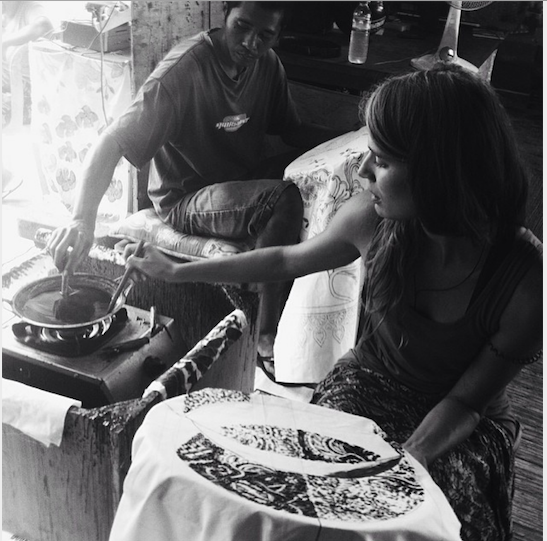
Your pieces are very striking, where does your inspiration come from?
Thank you. The inspiration comes from trying to make the pieces something that one could spend a lot of time looking at or thinking about. I want the abstract compositions to almost be a jungle gym for your brain to play in; your eyes find a way around the carpet, hopscotching from yellow to teal and then getting surprised by a bright red…you compare the black and anthracite, trying to see how they interact and then travel around the whole piece again, attempting to explore another way to experience the composition.
Can you tell us about your creative process, what steps do you take when starting a new project?
When beginning a new carpet, I start with taking images of my earlier carpet designs or sculptural objects that my husband has made and warping, rearranging and manipulating them in photoshop. I make multiple sketches and colour ideas and then we talk about which ones could work as a carpet. This process, of using each other’s earlier works as a reference, helps us develop a mutual aesthetic in terms of the objects we make in our studio and I like that we have a visual dialogue back and forth through our pieces.
What textile techniques do you most commonly use in your pieces?
Right now the work I am doing is mostly centred around tufting carpets with a tufting gun. It is an interesting process which allows you to work intuitively with a textile, you can basically draw with yarn. I enjoy other textile techniques as well and in my bachelors project I focused on creating hand-tools which could disrupt or enhance hand-weaving techniques. I also do lots of dyeing, knitting by hand and dream of one day being able to get along with a knitting machine…
How do you go about selecting your colour combinations, any tips?
The colour combinations are key to the pieces, I start out with a design on the computer and draw it onto the stretched backing cloth, then I lay tuft in the biggest blocks of colour in the design, usually the black and white areas. Thats when the interesting work begins, because the carpet starts “living” in the real world, as a carpet, not just a 2D design on the computer screen. So the colours interact in 3D space and the piece demands readjustments. I get a feeling that some contrast needs to be added, or a pop of a brighter colour and from that point on, I can engage with the making process in a more intuitive way. It’s a process of letting the piece become what it wants to be.
What do you enjoy most about working with textiles?
I think when I was younger I really liked the process of making. Making textiles requires this refining of a skill through repetitive action, thats why I enjoyed knitting. Row by row this surface gets constructed and you, as the maker, are bringing it into being. That was satisfying about making textiles.
Now, I enjoy the questions and challenges that working with textiles provides. Textiles often land in this strange “in-between” zone and one can ask, what is this piece of work considered? Is it art? Is it craft? Design? I like placing my work in various contexts; hanging a carpet on the wall, displaying it with furniture pieces, or just laying it on the floor. It’s interesting to see how people react to this and either way it’s a bit challenging.
When a carpet looks like a work of art it is strange to walk on it, but if the piece is on the wall and out of reach, it takes away the familiar tactile experience we have with carpets. It’s fun to play with these questions, try to come up with definitions for the work I make, then let those definitions dissolve and realise that these ideas are just subjective perspectives anyway!
Which other textile artists do you love? Are there any that inspire you, past or present?
Of course! Indonesian ikat weaving and batik dyeing really inspires me. I really like how Andrea Zittel uses weaving and textile techniques in her installative work and recently discovered the great quilted pieces by Adam Pogue and woven works of Kustaa Saksi. I am also stoked by Black Saturn clothing and her endeavours with abstraction in knitwear!
Do you have a favourite piece you’ve created?
I am particularly proud of the last carpet I made, “The Only Flower Left to Gather”. It came together as a piece efficiently and in the end became more than just an executed design. I like that it has touches of mid-century modernism and tropicalism. I am certainly inspired by both but wasn’t particularly focused on either of those things while making it. I’m glad that those things come through subtly! Below shows “The Only Flower Left to Gather” carpet and an image of earlier sculptural work made by husband for Opt Studios that the carpet was inspired by.
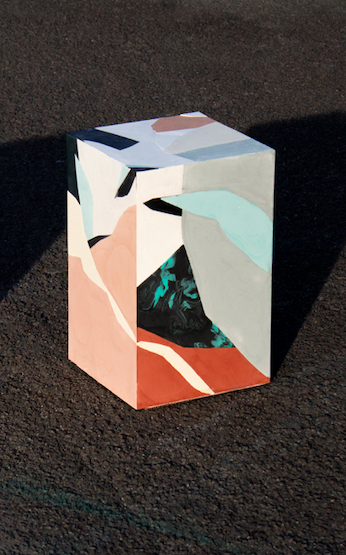
Sculpture work by Abigail Wheeler’s husband 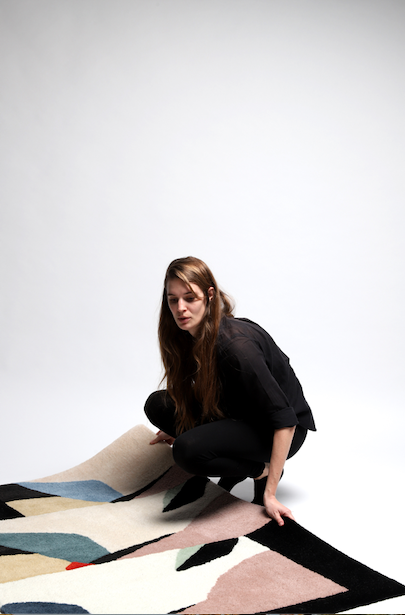
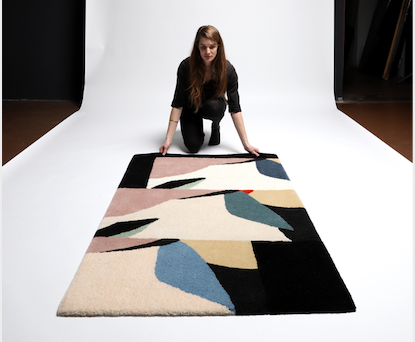
“The Only Flower Left to Gather”
Have you ever faced any challenges whilst creating a piece of work?
Certainly, as I was 4 days out from finishing my masters work, the small scissors in the tufting gun broke and I didn’t have replacements. I was a bit stuck and needed the tool to complete the carpets I was working on. Luckily I had a few friends who could lend me their guns, but one really gets used to their own tools while working and I needed to work with mine. The mechanic at my university told me that “it would be fun” to take the machine apart and try to solder the scissors back together. After being highly skeptical about this, it turned out that we did fix it and it was, indeed, fun. It was empowering to take the machine apart and learn what mechanisms make it work, but it might have gone to my head because now I feel like I could work on a car one day….
From glue not drying to running out of yarn or a neck cramp; challenges for sure are abound! But they are part of the process, which when you come through it at the end you are either happy you went through it or relieved it is over. Either way I hope to get better at just seeing the challenges as something to learn from, allow extra time to deal with them and navigate through them more effectively each time.
Do you have a least favourite part of the process?
It’s not at all my least favorite part of the process, but it is noteworthy how physical tufting is. Its actually a welcome relief because design these days means so much computer time. When you tuft, you use this weighty pistol to “shoot” yarn through a backing cloth, all the while pushing your body and the gun against the frame to make sure the tiny scissors of the pistol aren’t snipping the backing cloth. I hope that someone soon creates a “physiotherapy for makers” program, I think a lot of us would benefit from it.
Maybe my least favourite part of the process is schlepping material all over the city….I’ve done way too much textile transport on my bike. I’ve shared with you some photos of me transporting a table loom by bike and The Subjective Objects Series wrapped and strapped to my bike.
With all your various materials and tools it must get a bit hectic, how do you keep things organised?
I like the cycle of going from a messy studio to a clean one and back again. Its part of creativity to make a mess and then rein it in, get organised and winnow down what you’re using to the right tools, techniques and materials. A vacuum cleaner helps! It’s satisfying at the end of the day to vacuum away all the yarn dust and cut ends that come from how the machine cuts the yarn.
What are you currently working on? Are you able to share any ‘in-progress’ photos?
I am currently working on new carpet designs. In my first series, The Subjective Objects, I was working with carpets that had unique shapes and in my latest pieces I am using rectangular forms to see if the viewer could potentially get more out of the carpet’s composition when the edges are addressed in a more common way. My husband and I are also working on new sculptural and plaster works for shows in NYC and Berlin and setting our design studio up in a new space!
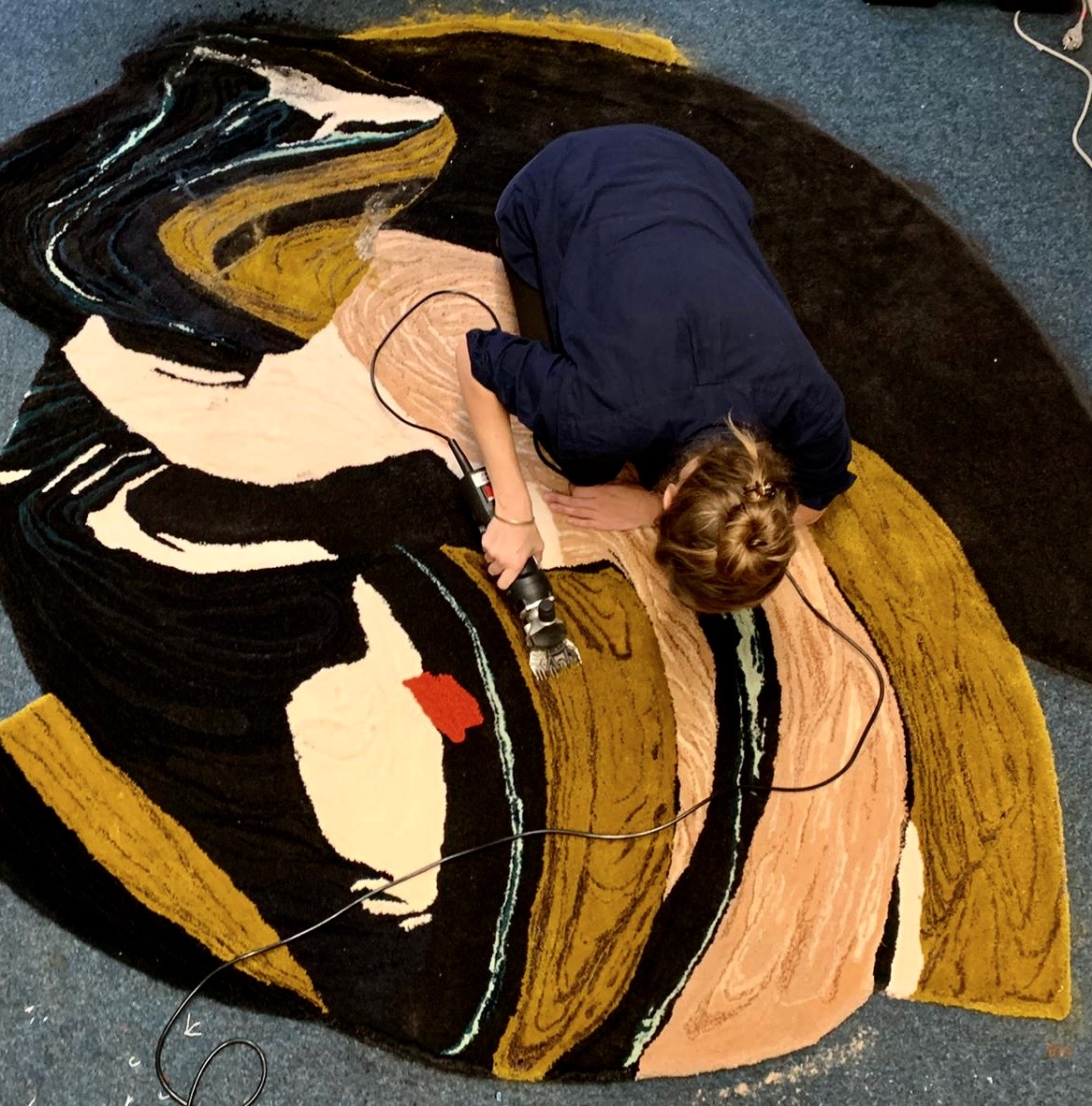
What’s next for you in terms of textile projects?
In the short term I aim to make a series of about 5 or so new carpets, I want to keep exploring colour and composition through the mutual sensibility of Opt Studios. In the longer term, just endless ideas about abstract quilts, going back to thinking about how tools influence the weaving process, knitting sweaters, learning how to draft a few clothing patterns and it goes on and on…
What advice would you give someone looking to get into textiles?
Practically speaking, know how to take care of your body….textile making is often really physical and labor intensive. More conceptually speaking, I think it’s always interesting to bring textiles into a modern context. Textiles are some of the earliest things that we, as humans, have made. There are so many traditions to be sustained and interesting ways of doing so. People looking to get into textiles should go for it and just make cool stuff!
We are trying to be a bit more eco friendly in 2020, do you have any tips or tricks to be more environmentally friendly in our day to day lives?
There are always ways of using or repurposing old material. New material for making doesn’t necessarily need to be bought. Companies often have surplus textiles that they sell affordably or give away. eBay is also good to find mis-dyed or off-cut material and with a little creativity it can help us move towards eco friendly goals.
Where can people find out more about you and your work Abigail Wheeler?
Please check out my studio’s website at ww.optstudios.com and our instagram account @optstudios. My personal account is @abigail_fern and our pieces can currently be seen in Berlin at the Andreas Murkudis showroom.
Thank you so much Abigail Wheeler! It’s been great getting to know you! 🙂
If you’ve enjoyed our Q&A with Abigail Wheeler and would like to be the first to see future Q&As with artists and rag ruggers, why not join our Rag Rug Community on Facebook, follow us on Instagram or join our fortnightly newsletter here. Or, for more textile work, why not check out the gorgeous work of another one of our Q&A victims, Selby Hurst Inglefield here.
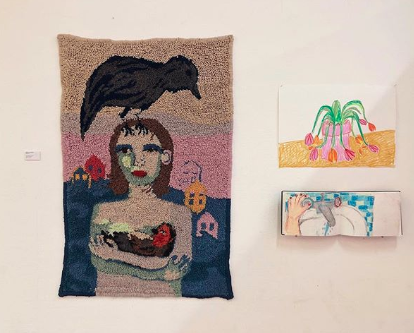
OR CONNECT WITH US ON SOCIAL MEDIA AT:
Instagram: https://www.instagram.com/raggedlife/
Facebook: https://www.facebook.com/raggedliferagrugs/
Pinterest: https://www.pinterest.co.uk/raggedlife/
Twitter: https://twitter.com/raggedlife
As always, happy rag rugging!
Elspeth x
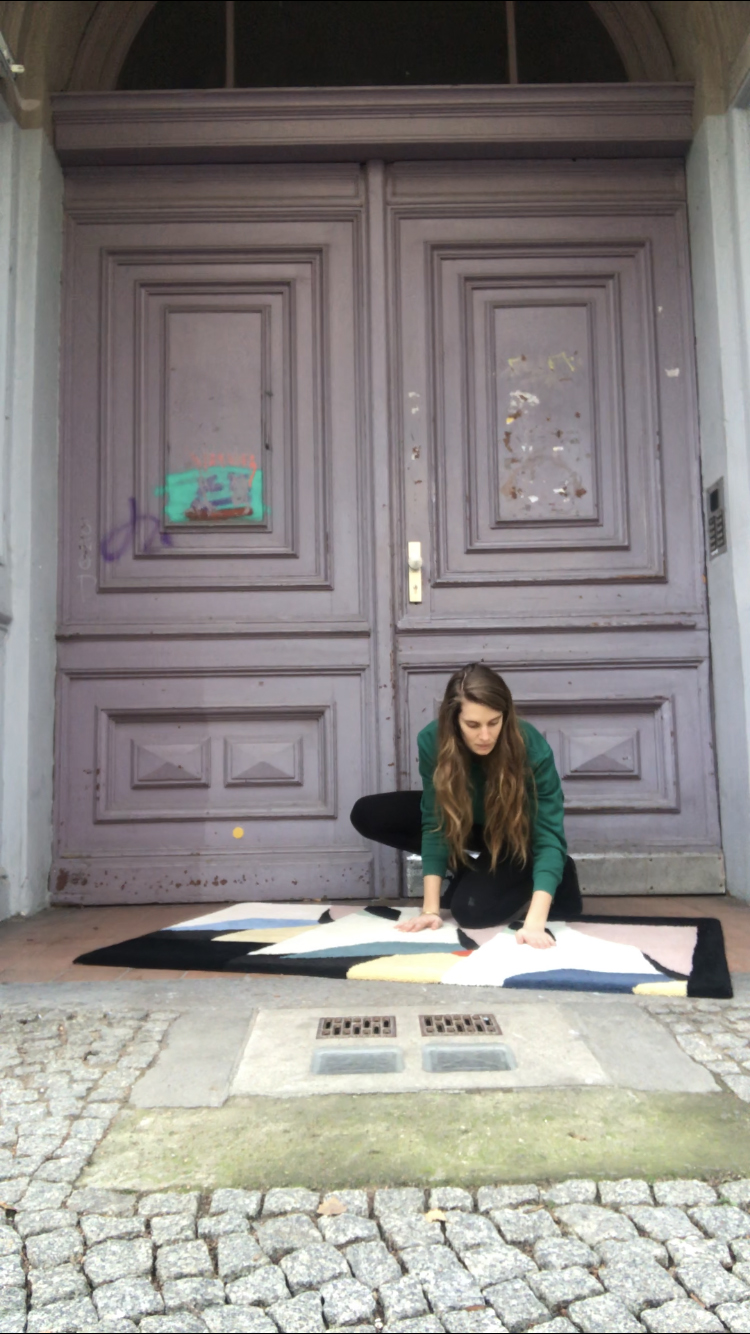
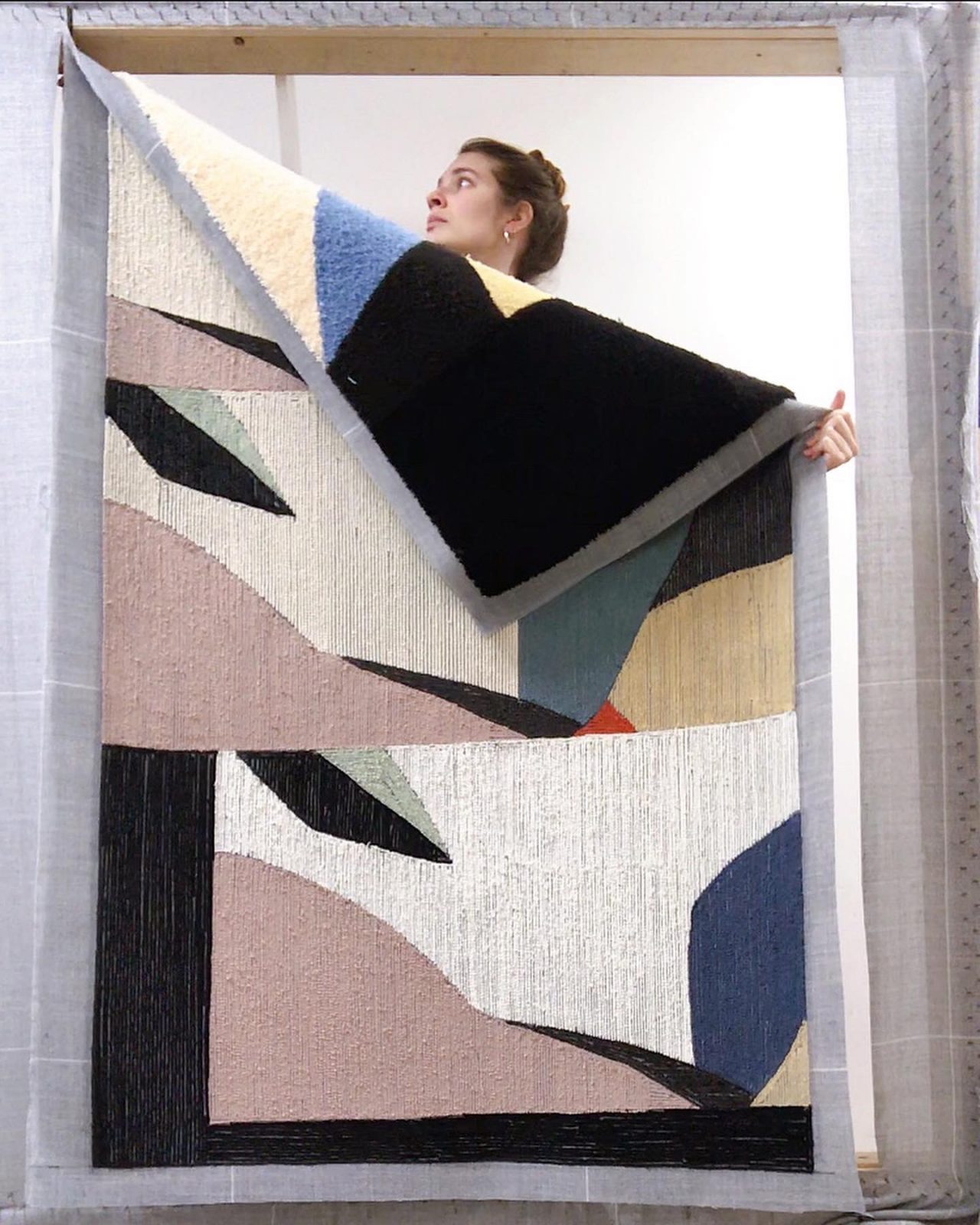
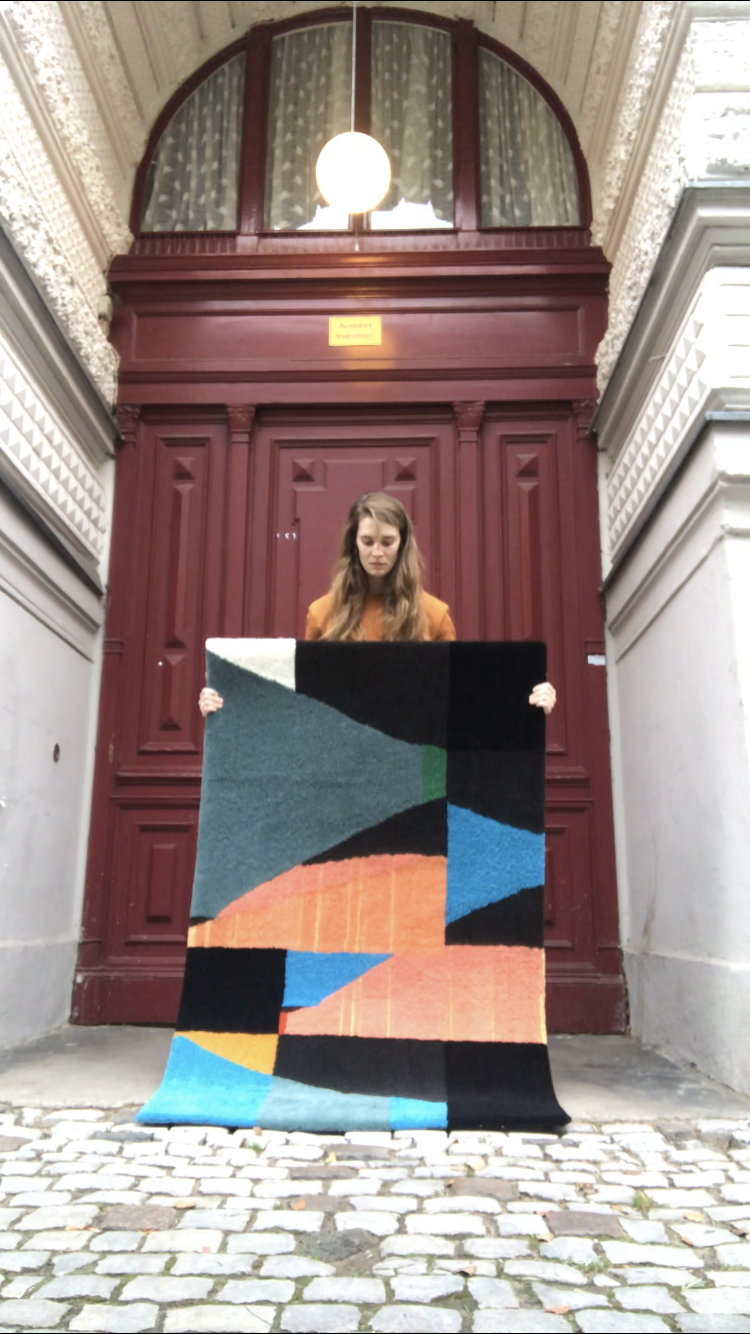


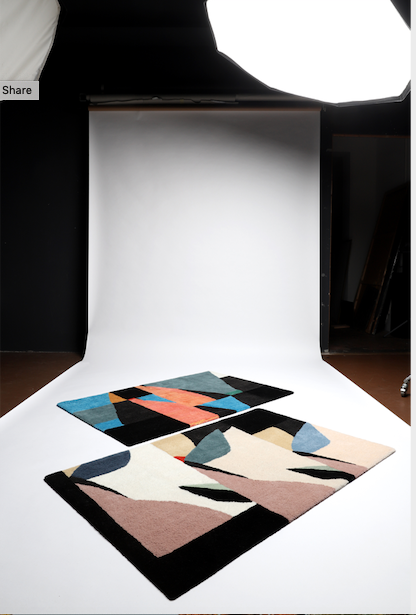
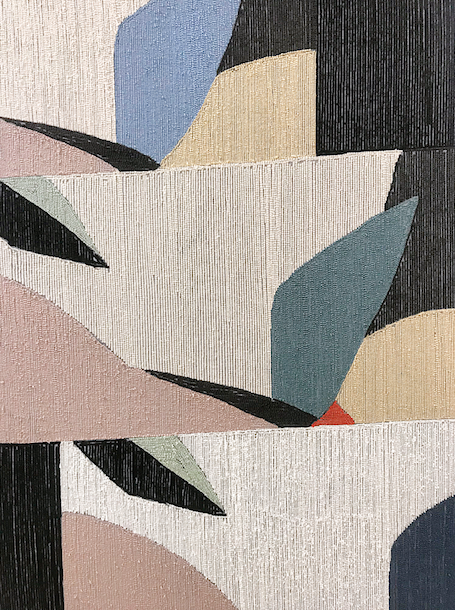
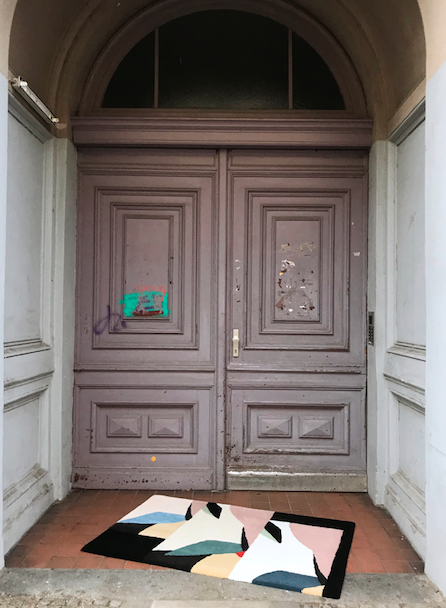
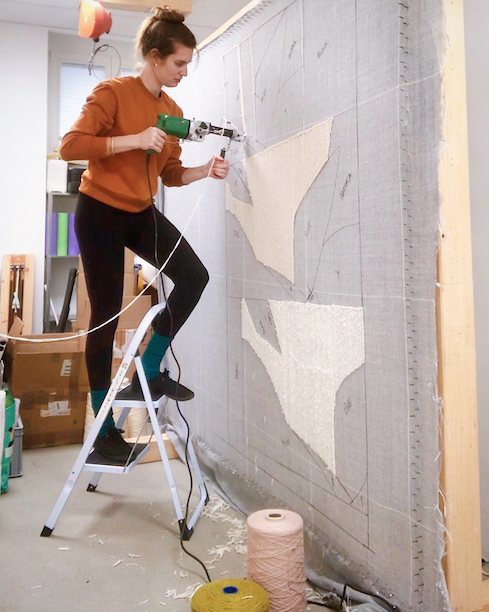
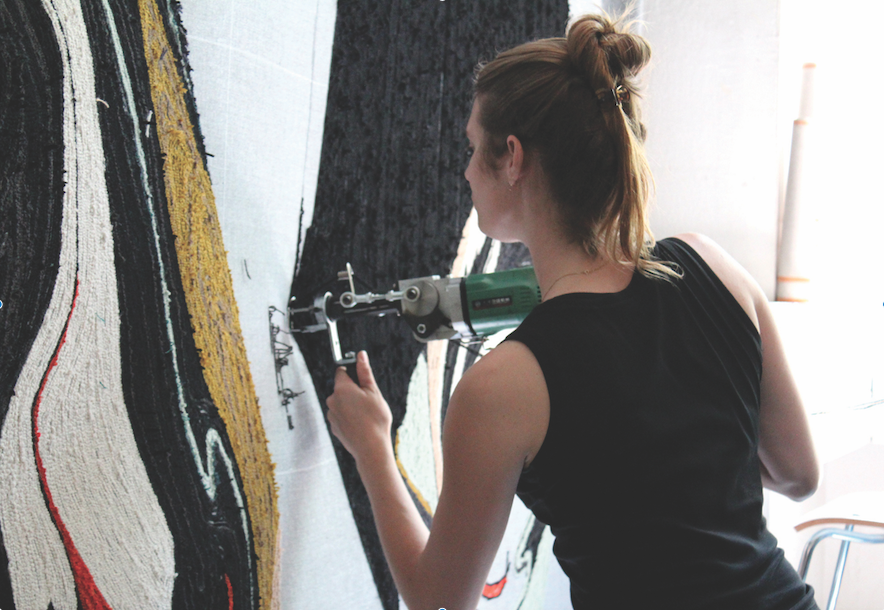
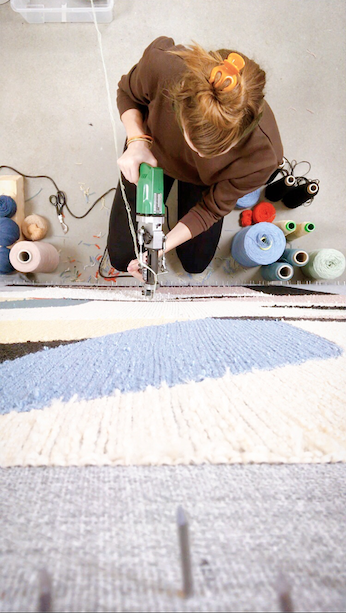
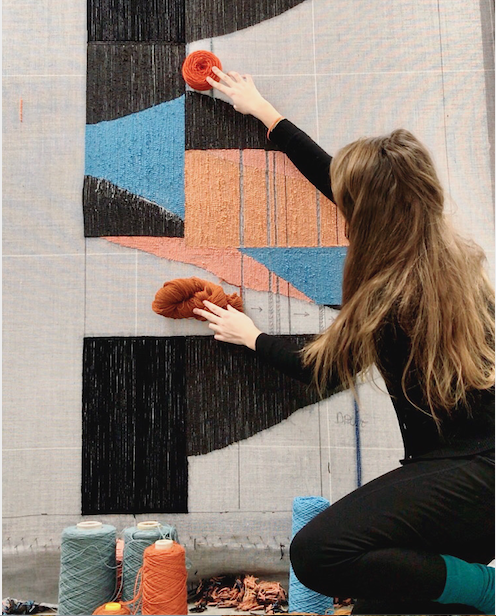
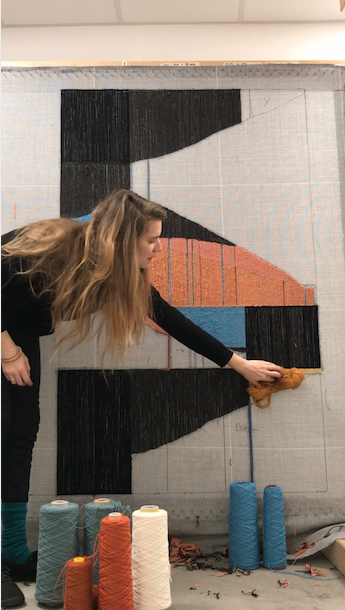
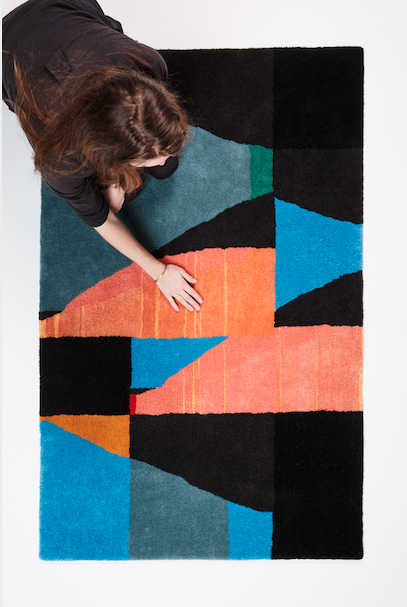
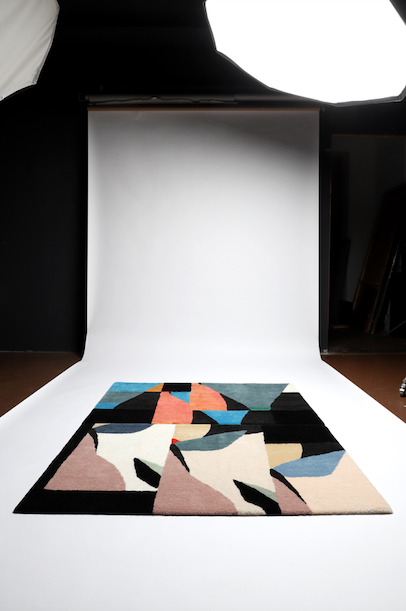
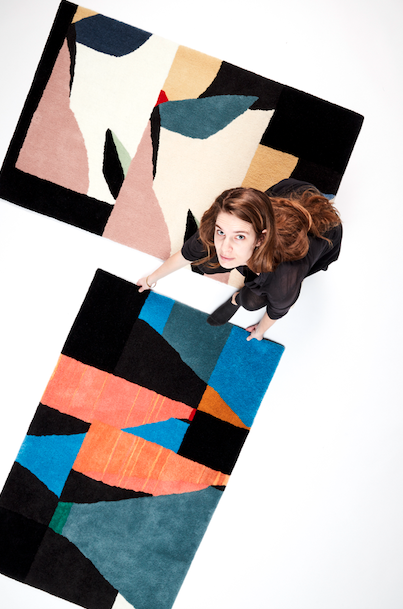
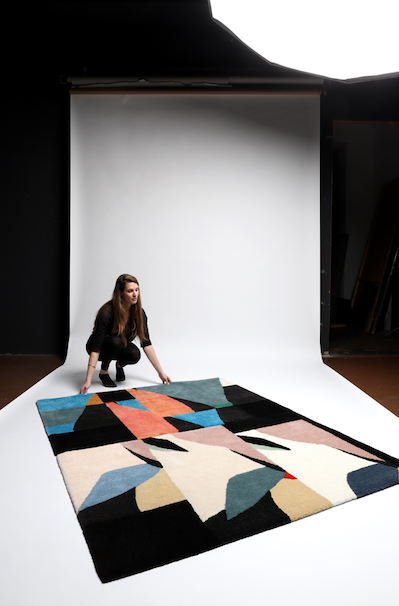
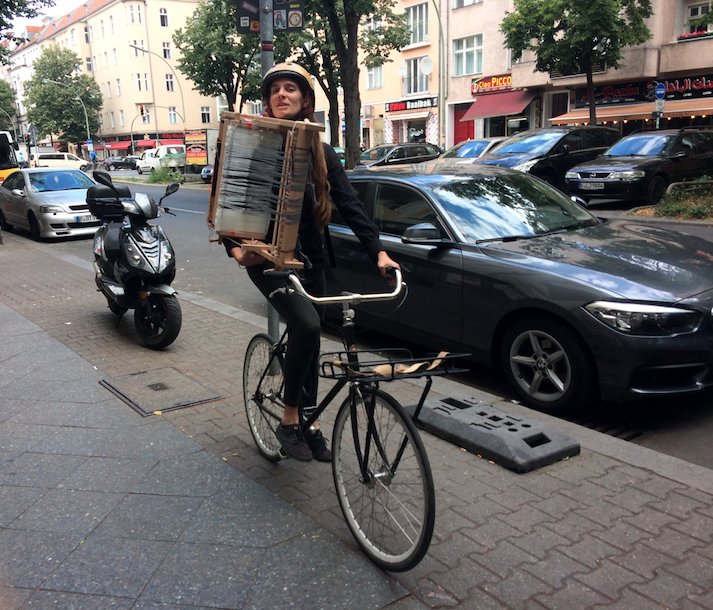
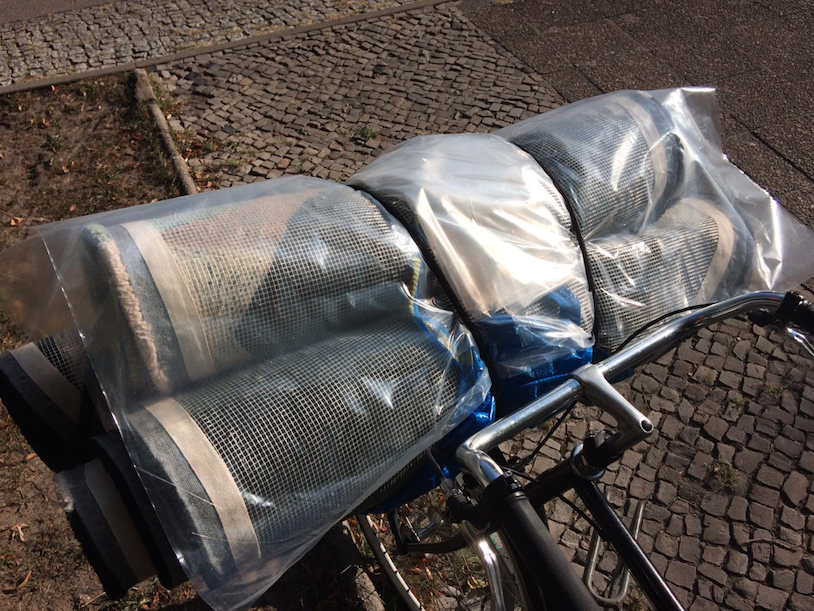
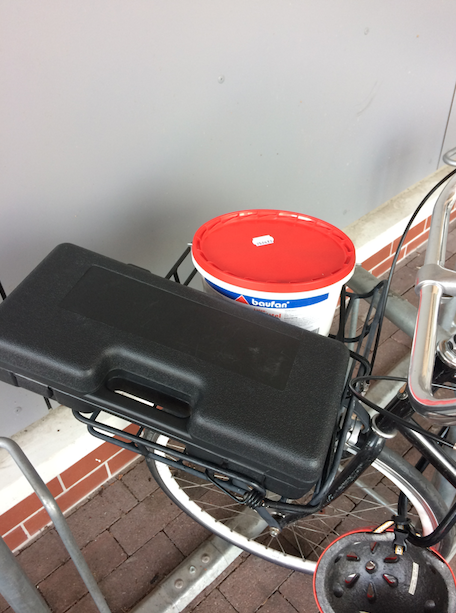
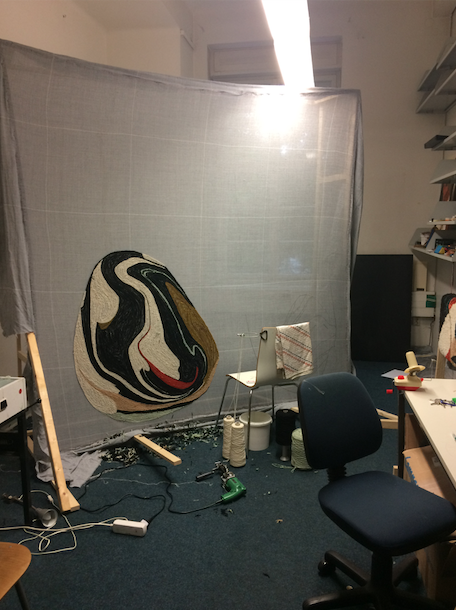
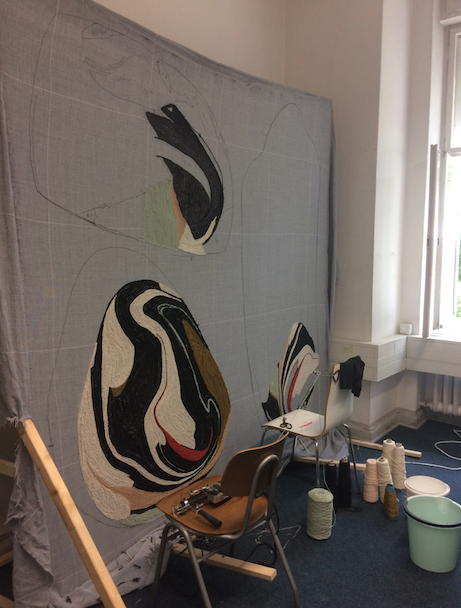
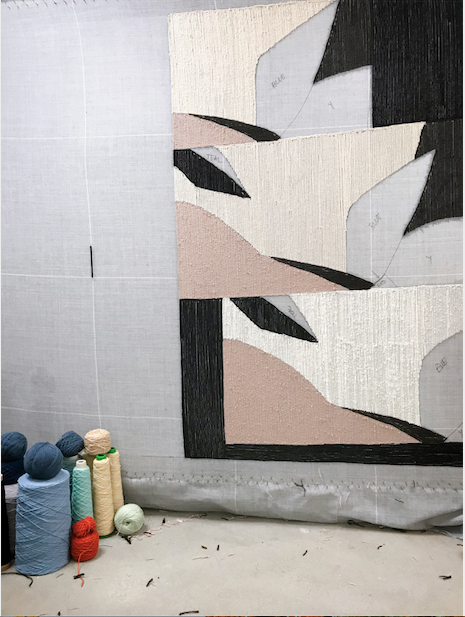
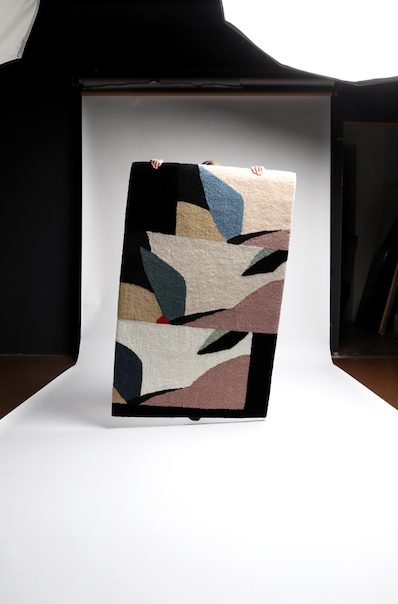
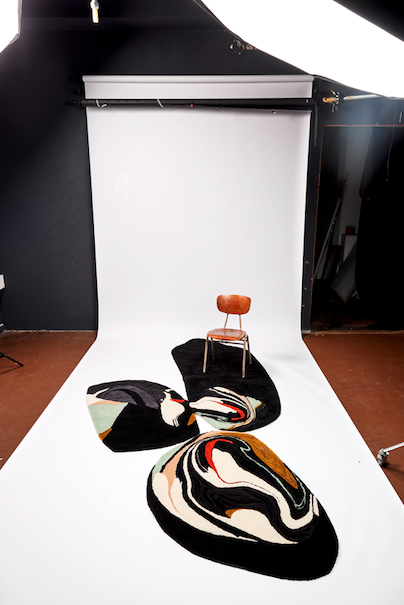
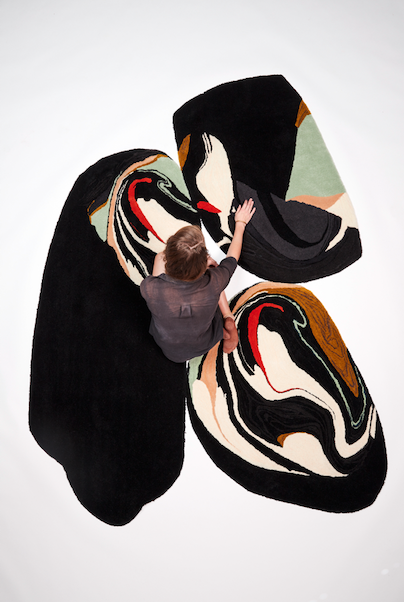
[…] Additionally, for more textile inspiration, why not check out the gorgeous work of another one of our Q&A victims, Abigail Wheeler here. […]